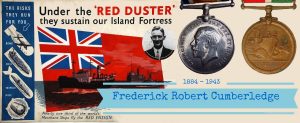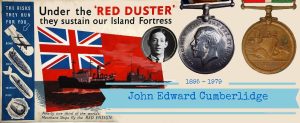Search
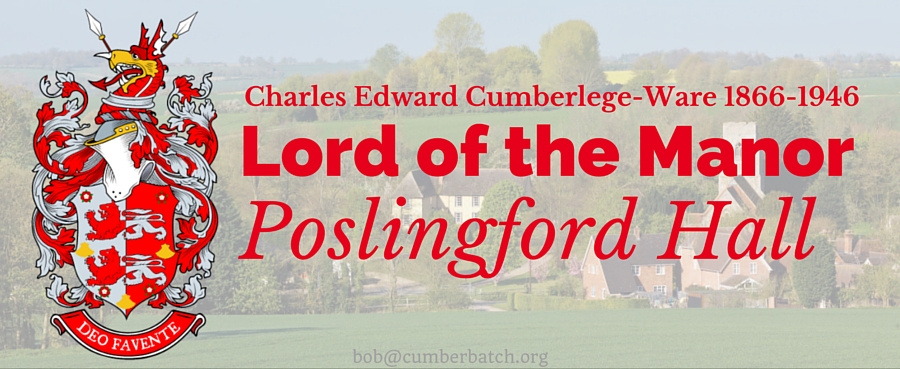
Charles Edward Cumberlege-Ware 1866-1946
Charles Edward Cumberlege-Ware was born in March of 1866. He was the eldest son of Charles E Cumberlege-Ware, Vicar of Astwood, Buckinghamshire and his wife Elizabeth Ann nee Williams.
Poslingford Hall Manor, Suffolk.
In 1823 Hart Logan was lord, but in 1847 the manor was vested in Samuel Ware, of Hendon Hall, in the county of Middlesex. He died in 1860 when the manor passed to his nephew, Charles Nathaniel Cumberlege-Ware, 3rd son of Capt. John Cumberlege by Anne his wife, daughter of Samuel Ware, of Highgate, who assumed by Royal Licence in 1862 the name and arms of Ware.
He married Caroline, eldest daughter of Richard Hooton, of Leamington, co. Warwick, and on his death, 22nd Sept. 1888, the manor passed to, and is now vested in, his grandson, Charles Edward Cumberlege-Ware, of Hendon Hall, Hendon, and 86, Lancaster Gate, London, son and heir of the Rev. Charles Cumberlege-Ware, Vicar of Astwood, Co. Bucks, (and of Elizabeth Anne his wife, daughter and heir of Mrs. Montgomery Williams, of Crawley Grange, co. Bucks.), who had died in 1871 in his father's lifetime.
Armorial bearings — Per pale argent and gules, two lions passant within an orle of roses and escallops all counter-changed. Mantling gules and argent; and for his Crest, upon a wreath of the colours, in front of two spears in saltire proper, a dragon's head gules, gorged with a collar gemel argent. Motto — "Deo favente." These are the arms of the WARE family.
Source: Arthur Charles Fox-Davies. Armorial families : A Directory of Gentlemen of Coat-Armour (page 87 of 354).
Ware Coat of Arms
Blazon: Per pale argent and gules two lions passant, within an orle of roses and escallops all counterchanged.
Crest—In front of two spears in saltire proper a dragon's head gules gorged with a collar gemel argent.
Motto—Deo favente.
Note: (Poslingford, co. Suffolk, and Hendon Hall, co. Middlesex).
Source: Burke, Sir Bernard. The General Armory of England, Scotland, Ireland, and Wales. London: Harrison & Sons, 1884. 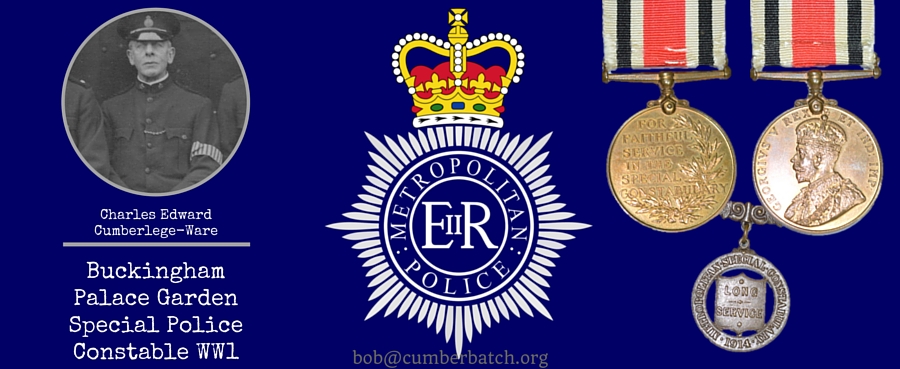
The Metropolitan Police Special Constabulary during WW1
The Special Constables Act of 1914 recreated the volunteer police force for the duration of the First World War. The Act describes:
2. Any special constable so appointed shall be appointed for the preservation of the public peace, and for the protection of the inhabitants, and the security of property in the police area for which, or for any part of which, the justices making the appointment act. The London Gazette
Publication date:8 September 1914
Supplement:28896
Page:7187
https://www.thegazette.co.uk/London/issue/28896/supplement/7187
The Telegraph of 27 December 1918 announced that:
REVIEW OF THE SPECIALS
The King has expressed to Sir Edward Ward, the Chief Staff Officer, his desire to review the Metropolitan Police Special Constabulary at Buckingham Palace immediately before demobilisation. The date has not been fixed, but will probably be early in February [1919].
The Daily Express of 3rd January 1919 reported:
"SPECIALS" MEMENTOES
TRUNCHEON AS A SOUVENIR OF SERVICE
It is officially announced that when the Metropolitan Special Constabulary are demobilised each member of the force who served for not less than two years will be allowed to retain his truncheon, armlet and whistle.
The Commissioner of Metropolitan Police states that the services of the "specials" are not likely to be required for more than a few months longer, and that even before demobilisation he will be able to reduce their work considerably.
A review of the special constabulary by the King will probably take place about the middle of February.
The Morning Post of 4th January 1919 reported:
SPECIAL CONSTABULARY
A SCOTLAND YARD TRIBUTE
The question of the future status of the Special Constabulary Force has earned commendation for tact and discretion in the enforcement of the lighting and various other regulations, and its behaviour during air raids was worthy of the highest praise. The King has marked his appreciation by expressing his desire to review the Force, but beyond this any statement as to reward or further service is premature.
THE STRENGTH of the SPECIAL CONSTABULARY during WW1
| 1915 | 1916 | 1917 | 1918 | 1919 | Average |
| 23,285 | 22,552 | 22,643 | 21,561 | 19,366 | 21,881 |
As of 1st January.
Source: Metropolitan Police Constabulary 1914 – Report 1919 [HO 45/11060/255045]
The equipment issued to special constables is identified in Directions to Special Constables:
Equipment
7.1 The equipment of a Special Constable consists of:-
(a) A Warrant Card, which is his authority to act, and which is always to be carried when on or off duty.
(b) A Whistle, which is always to be carried when on or off duty.
(c) An Armlet, or if of the rank or above the rank of Sergeant, two armlets-whereof the first or ordinary police armlet is the visible badge of office and is to be worn on the left upper arm only when actually on duty, and whereof the second is a coloured armlet designating the rank of the wearer and is to be worn on the right upper arm only when actually on duty. The armlet or armlets is or are always to be carried when on or off duty.
(d) A Truncheon, Which is the only weapon which may be carried withour special authorisation, and which, as it may be deemed provocative it is better not to display, and which the Regular Police find they can carry most conveniently in their trousers pocket, where, though out of view, it is readily available when required.
(e) A Metal Badge, which may be worn either on or off duty so long only as the wearer is a Special Constable.
(f) A copy of "Duties Hints for Constables and Section Sergeants."
(g) A Note Book.
[Source: Directions to Special Constables The National Archives MEPO 4/42 – available to download for free]
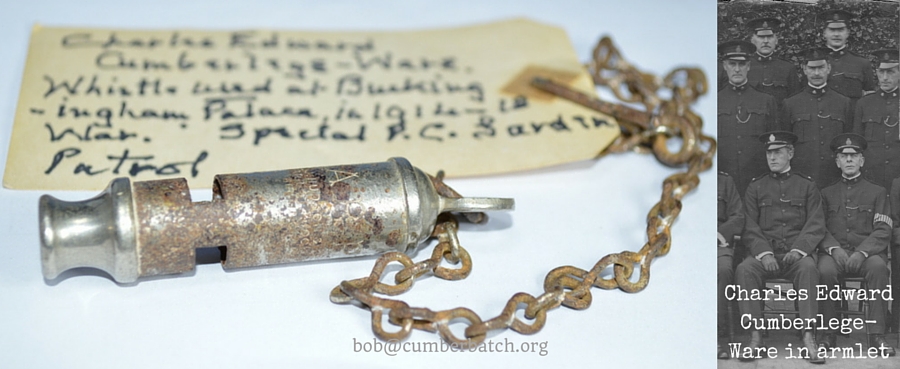
Charles Edward Cumberlege-Ware – Special Police Constable Buckingham Palace Garden Patrol 1916-1918
Charles Edward Cumberlege-Ware was a Metropolitan Special Police Constable patrolling the gardens at Buckingham Palace between 1916 and 1918.
The Special Constabulary Long Service Medal is Established
WHEREAS His late Majesty King George the Fifth in consideration of the faithful and devoted service rendered by members of the Special Constabulary during the Great War, 1914-1918, and being desirous of distinguishing such service by some mark of His Royal Favour, and also of providing a means of recognising continued and efficient service which might be rendered in the future by members of any Special Constabulary Reserve thereafter constituted, did by Warrant under His Royal Sign Manual dated the 30th August 1919, institute and create a new Medal to be awarded for such service as aforesaid:
I. It is ordained that the Medal shall be designated and styled "The Special Constabulary Long Service Medal".
II. It is ordained that the Medal shall consist of a circular Medal of Bronze with the Effigy of the Sovereign on the obverse and on the reverse an appropriate design or inscription, and shall bear on the rim the name of the person to whom the Medal is awarded.
III. It is ordained that the Medal shall only be awarded to those of Our faithful subjects who, being or having been members, of the Special Constabulary, shall satisfy the following conditions, namely: —
(1) Shall have served as a Special Constable without pay during the Great War 1914-1918 for not less than three years, and shall during that period have performed not less than 150 police duties: or
(2) Shall have served as a Special Constable without pay for a period of not less than nine years or for periods amounting in the aggregate to not less than nine years, and shall be recommended by the Chief Officer of Police as willing and competent to discharge the duties of a Special Constable and as having performed without pay such duty as a Special Constable as has been required from him by the Chief Officer of Police during that period or those periods….
VI. It is ordained that an additional bar or clasp which shall be attached to the riband and shall bear upon it the words "Long Service" may be awarded to those to whom the Medal has been awarded upon the same recommendation by the Chief Officer of Police as is required for the award of the Medal upon the completion of each ten years of service after the completion of qualifying service for the Medal, or, where such award was made under Rule III (1), after the 19th July 1919, and for each bar awarded a small silver rose shall be added to the riband when worn alone.
The London Gazette
Publication date:14 July 1982
Supplement:49051
Page:9255
https://www.thegazette.co.uk/London/issue/49051/supplement/9255
King George V awarded Charles Edward Cumberlege-Ware the following medals:
- Special Constabulary Long Service Medal: For Faithful Service in the Special Constabulary. Charles E. C. Ware, Georgivus V Rex Et Ind: Imp:
- Metropolitan Special Constabulary 1914 "Long Service" Badge
He was entitled to keep his Police Whistle and Chain.
Charles Edward died on 24th November 1946. His estate was probated in the following year and he left personal effects totalling £14,114 5s. 6d and his property effects totalled £164,907 16s. His wife Beatrice Susan Cumberlege-Ware nee Bell died 11th May 1954 and her estate was probated in the same year. She left to Violet Beryl Hawkins, the wife of Victor Francis Staples Hawkins D.S.O. M.C. and her daughter, effects totalling £16,479 17s. 9d.


